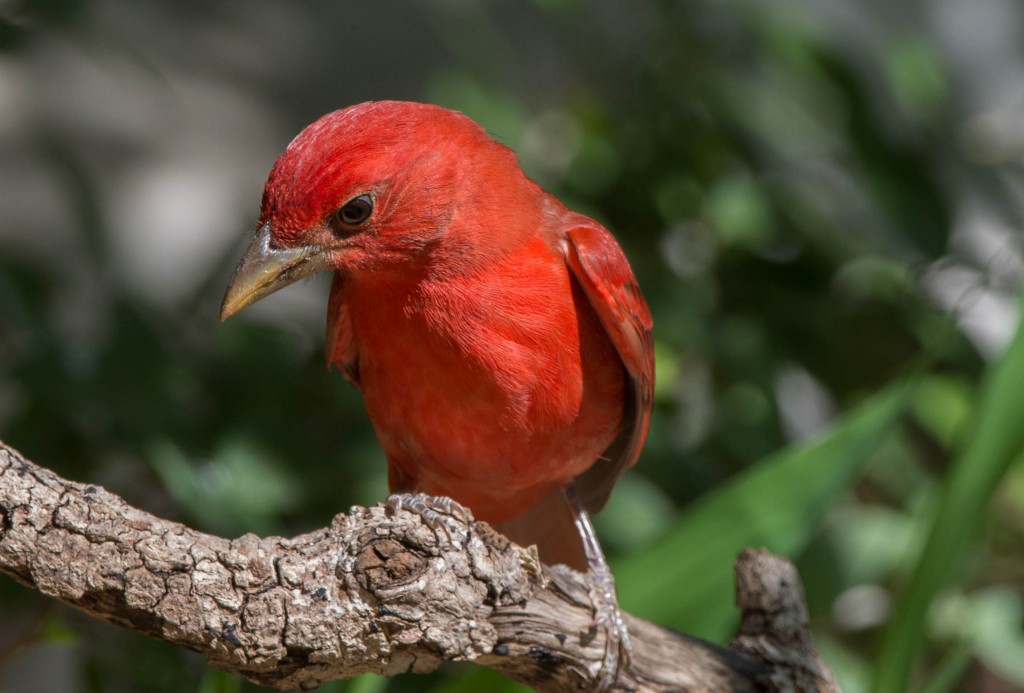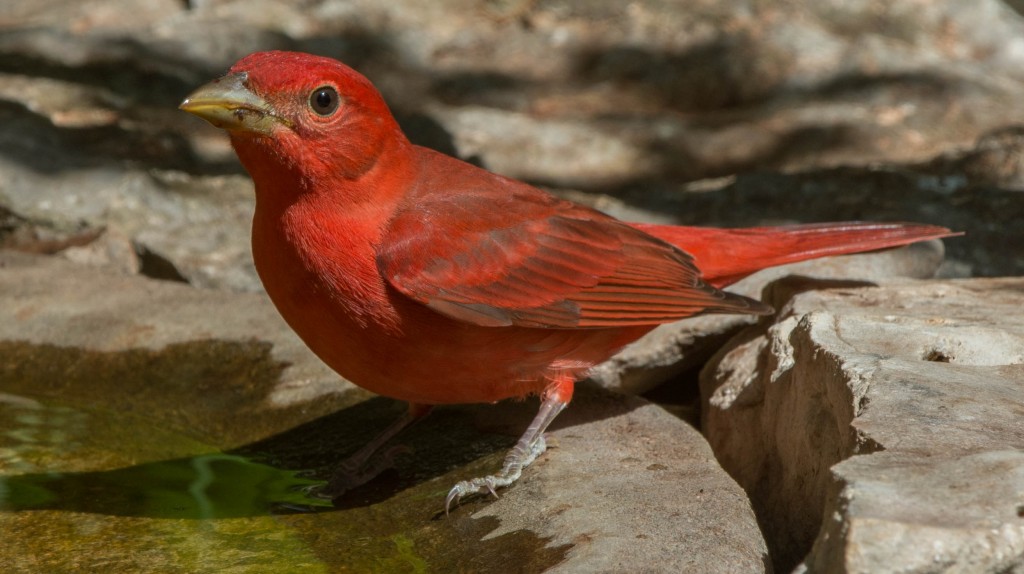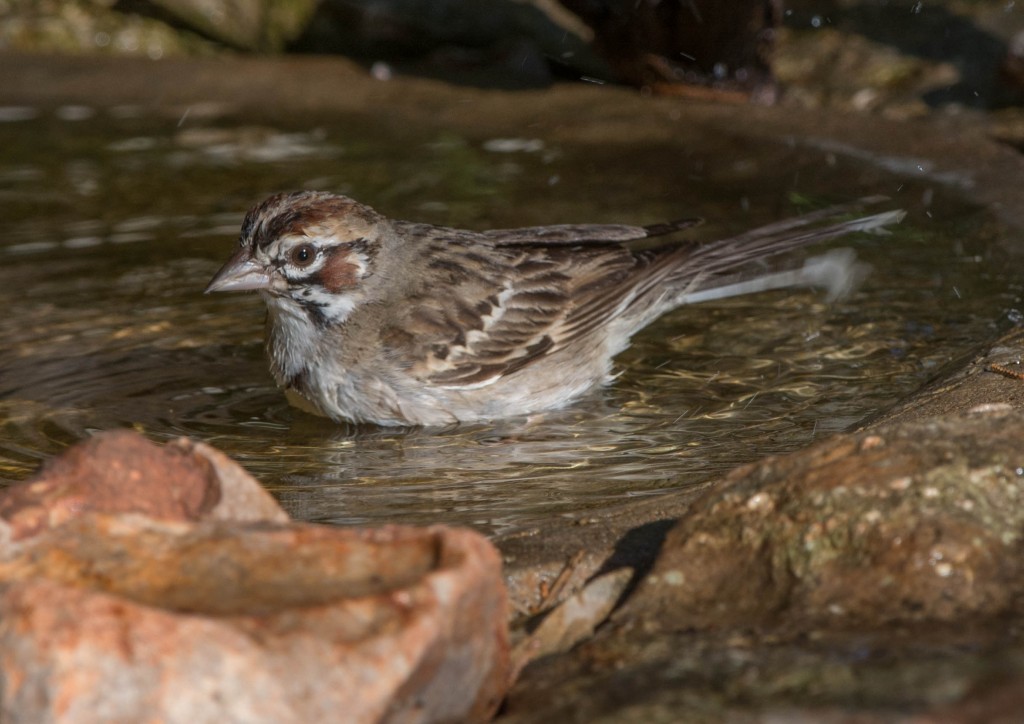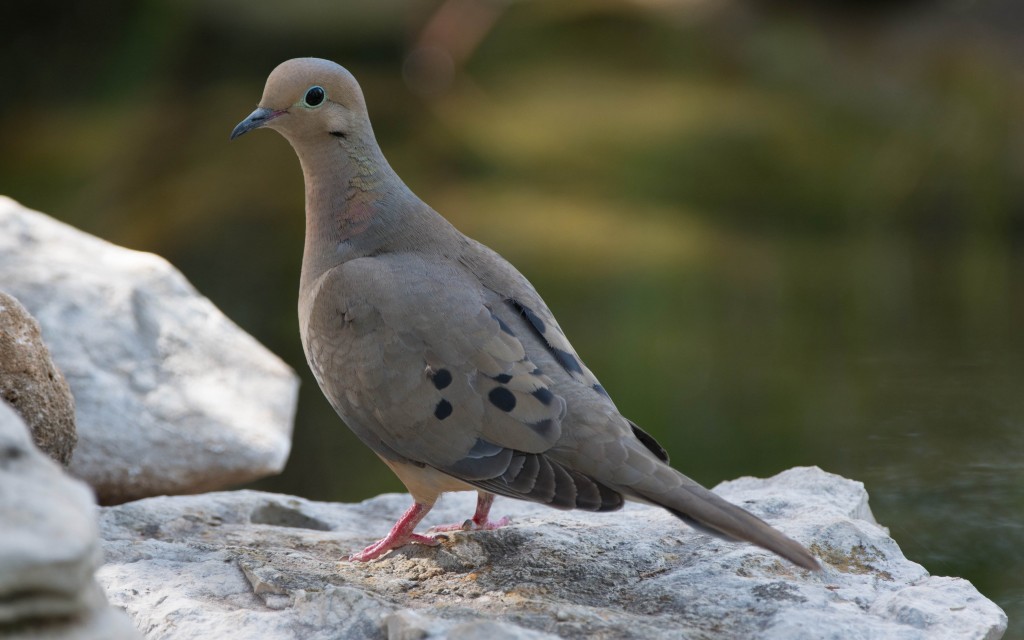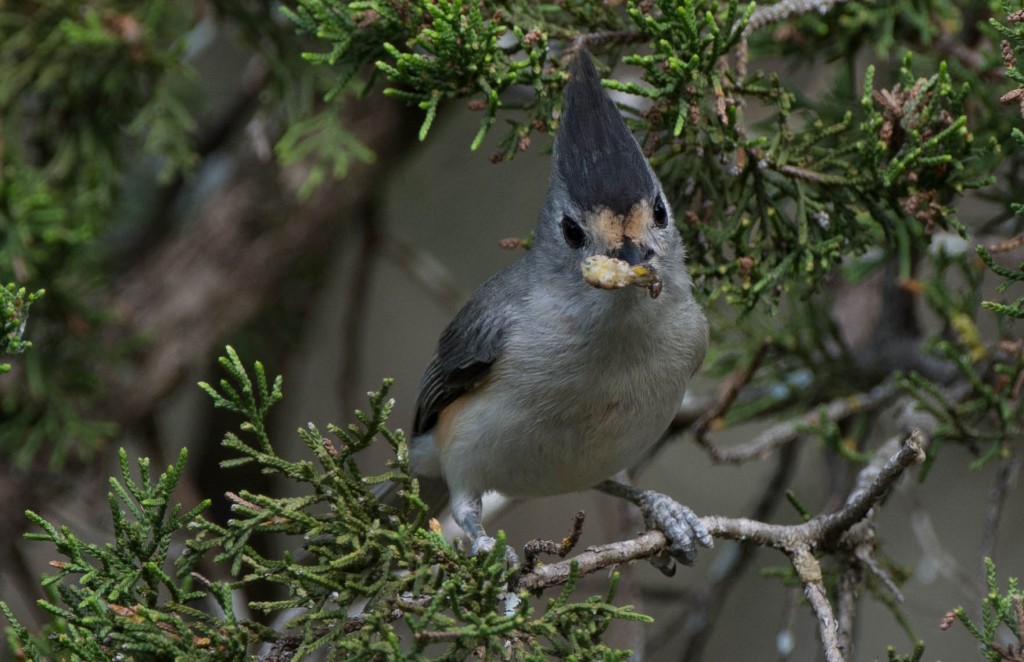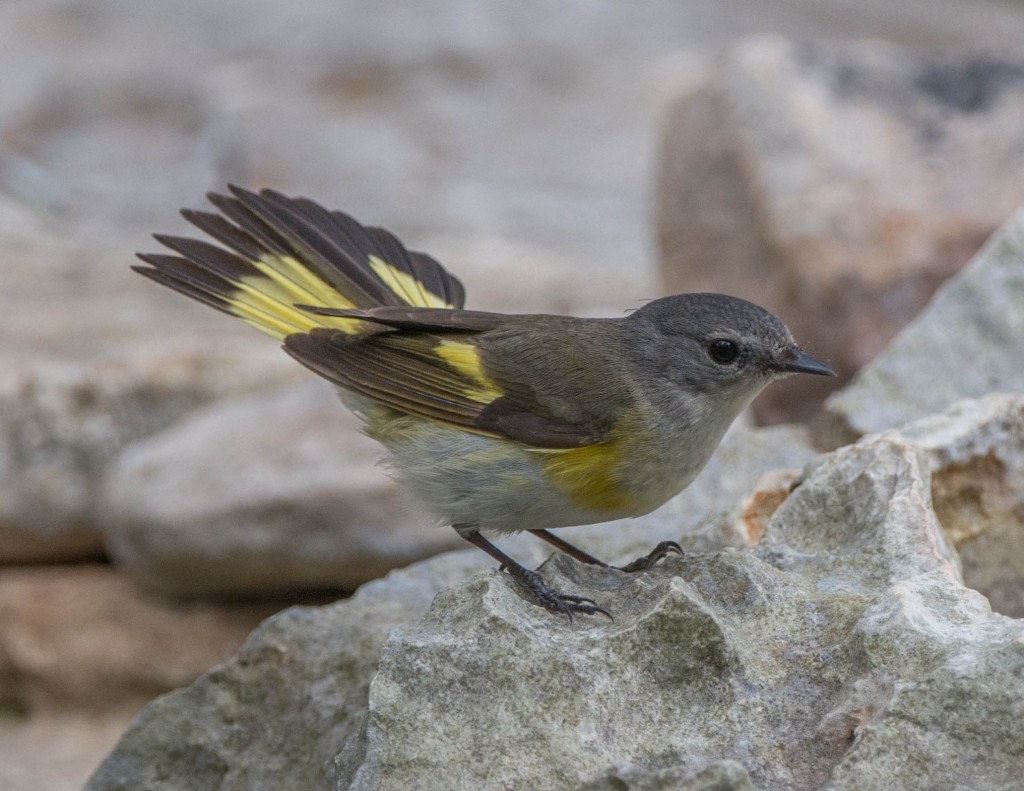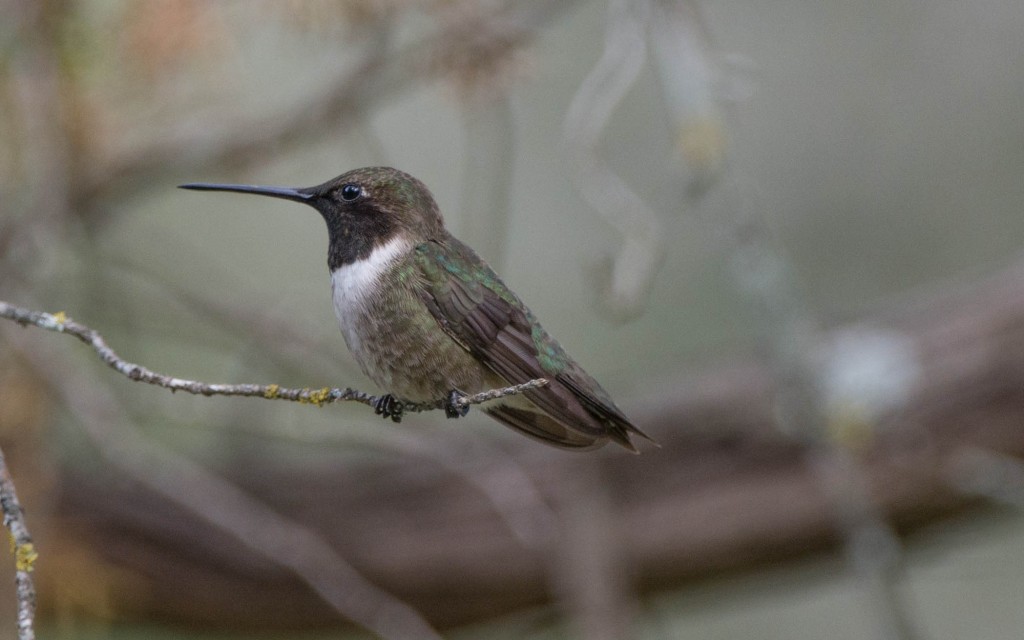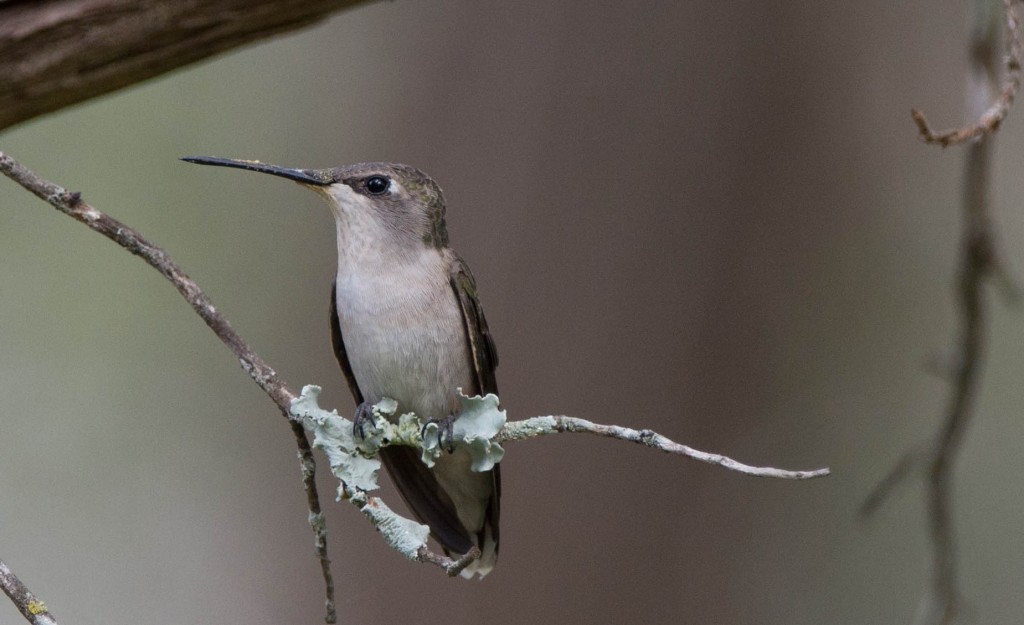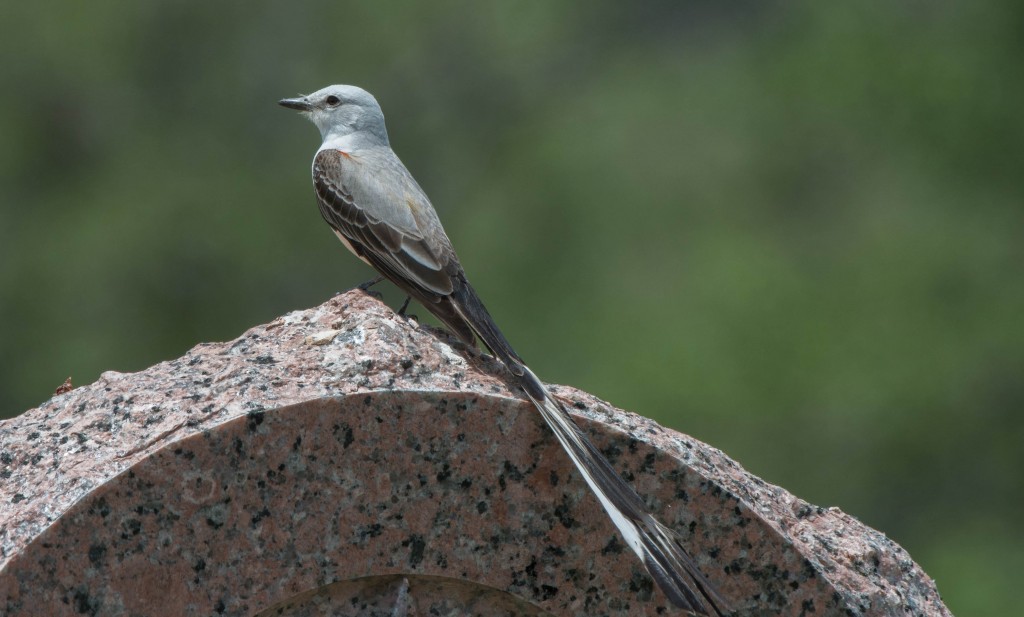Here are some of the best of the rest of the photos that I took in Texas in early May…
We’ll start with a couple of photos of a male Summer tanager. How do I personally remember the difference between a Scarlet tanager and the similar Summer tanager? I remember that “the Scarlet tanager isn’t”… that is, the Scarlet tanager is not entirely scarlet. It has black wings. This seems to me a clear case of the misnaming of a couple of species of birds!
If you have difficulty telling the various kinds of sparrows apart this bird spells relief. It’s a Lark sparrow and has very distinctive head markings.
This next bird is a Mourning dove… found in large numbers across Texas and in much smaller numbers in Western Washington. I was amazed to find that these birds can occasionally be found (mostly heard) in some of the deeper forested areas.
This next bird is a titmouse. There used to be a single species (Tufted titmouse) with two different races, the black-crested and the gray-crested. They have now apparently been separated into two different races and Central Texas is on the border between the two species where hybridizations can be found. This individual appears to be black-crested and was raising a family in a nest box with what appeared to be a gray-crested mate. I watched these birds bring food back to the next box numerous times, often with what appeared to be the same kind of juicy caterpillar.
Here’s another Bewick’s wren. I’ve previously included photos of this bird, including some taken in Western Washington. This wren closely resembles the Carolina wren, morning’s early wake-up call in the spring! When people complain about a bird that wakes them in the early morning in Central Texas you can assume that it’s the Carolina wren.
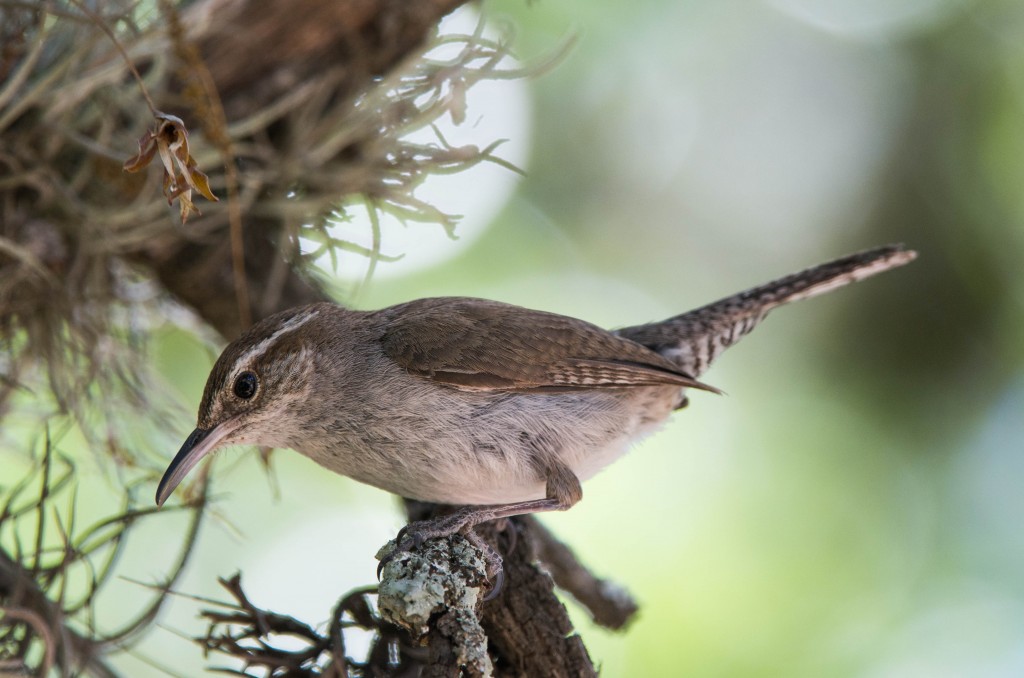 This is a better photo of a bird whose photo I had previously posted… a female American restart.
This is a better photo of a bird whose photo I had previously posted… a female American restart.
Getting on towards the end now, I’m posting another couple of photos of Black-chinned hummingbirds… a male and female.
And finally, a ‘not great’ photo of one of Texas’ most interesting birds, the Scissor-tailed flycatcher. This bird is a magnificent, if not rapid flyer. With its long tail it is extremely maneuverable and catches insects both in the air and on the ground.
That wraps it up for Texas. Next we’ll be off to either Alaska or Eastern Washington with a possible break for a little yard tale first.

